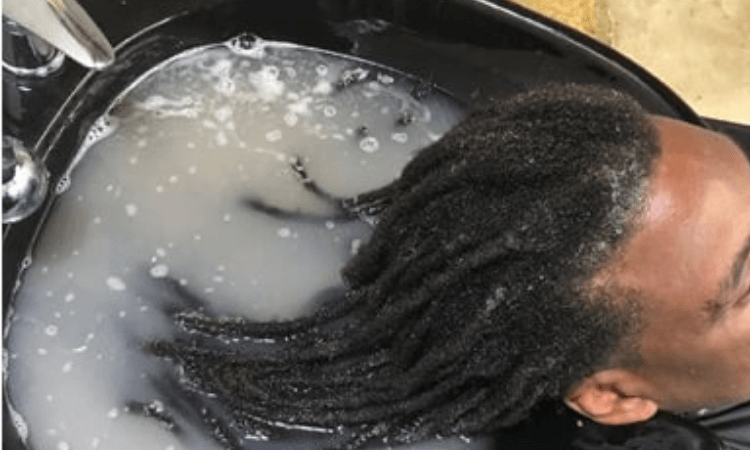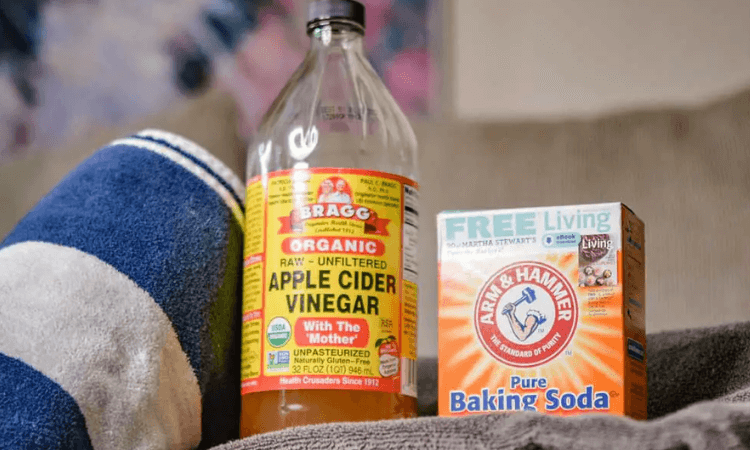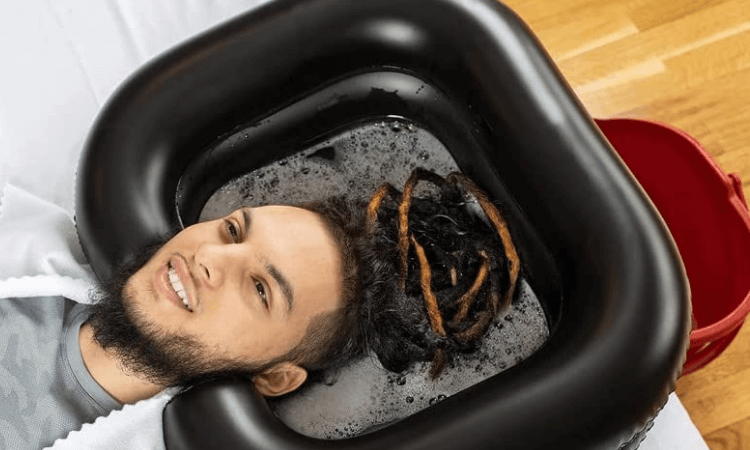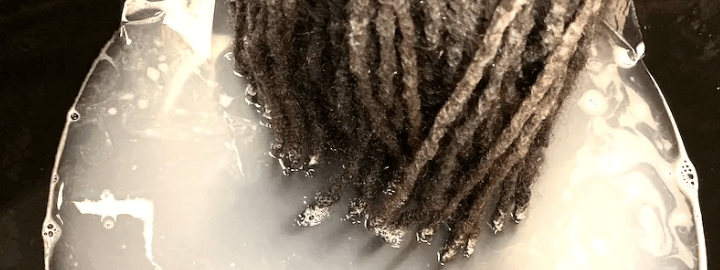Are you frustrated with getting much conflicting information on the internet on dreads detoxing?
Worry no more! I have experienced the versatility and freedom of dreadlocks. I also did a detail about dread detox.
So, if you want to learn about dread detox, keep reading to find out more.
What Is A Dread Detox?
Loc detox is a deep-cleansing method that removes everything that should not be in your dreads without damaging the dreads’ form. It entails deep cleaning down to the core of every dreadlock to dissolve and remove buildups such as dirt, hair product, trapped odor, and sebum.
Every individual with locs will be required to do a full loc detox at some stage. Most people usually do a loc detox once or twice a year.
However, loc detox is not recommended if you have locs in the early phases, such as the budding or starter locs phase. As the locs are still fragile and young, doing a detox cleansing on them will loosen them.

2 Methods to Do Loc Detox
Typically, loc detox is done using either of the following
- ACV (Acid Cider Vinegar)
- A mixture of ACV and baking soda
Here is how loc detox works:
1. ACV
ACV is antifungal and antibacterial. ACV kills microbes, fungus, and bacteria in dreadlocks.
Besides, it works as a natural clarifying shampoo. ACV can deeply penetrate every dreadlock to dissolve oil, dirt, microbes, dead skin cells, and odors in the core of your dreadlocks.
Its pH level of around 4 is a perfect match for your hair and scalp. This balanced pH assists reduce breakage, frizz, and static in locs while leaving your hair shinier and softer. [1]
ACV also contains acetic acid, minerals, and vitamins, making your hair healthy and growing fast.
Therefore, an ACV loc detox 1-2 times a year is a great way to keep your dreads clean and smelling nice.

2. A mixture of ACV and baking soda
Baking soda (sodium bicarbonate) is a strong natural alkaline and acts as a great clarifier. It works by removing anything acidic from your locs.
However, baking soda can be harsh on your hair. Its high pH rating is around 9 compared to about 4 of your hair.[2]
You can prevent the harsh baking soda from damaging your dreads by following it up with a low-pH ACV. The ACV neutralizes the baking soda, thus bringing your hair’s pH level to its normal range.
How to Detox Dreads at Home (Step-by-Step)
Dread Detox Ingredients
- Inflatable shampoo basin
- Two tablespoons of lemon juice
- ¼ cup baking soda
- ¾ cup ACV
- Towel
- Anti-residue shampoo
To make the dread detox solution, you need to do the following;
Step 1: Make the dreads detox solution
- Fill your Deluxe inflatable shampoo basin with warm to hot water halfway.
- Add in ¼ cup of baking soda.
- Pour in ¾ cup of ACV. The mixture will get fizzy.
- Add two tablespoons of lemon juice
- Stir the mixture using your fingers.

Step 2: Work the mixture into the dreads
Scoop up some mixture using a cup, pour it onto the scalp, and massage the scalp gently. This will assist dislodge residue there.
Also, it should take a few minutes until you feel the scalp and hair are clean enough.
Step 3: Soak the dreadlocks for 20 minutes
You need to sit or lie comfortably and allow your locs to soak for 20 minutes. It is vital to set a time to help you keep track of the time.
After that, gently work the mixture into the dreads squeezing from root to root. If the water gets very dark, you can replace it with another clean, soft water.
You need to ensure that you have entirely removed hair buildup and the hair is thoroughly rinsed.
Step 4: Clarify and deep condition your dreads
This is the final step. You will need to wash your dreads with the dreadlock shampoo. This helps in washing away the buildup dislodged from the rinse.

6 Things You Should Consider When Detoxing Locs
1. Don’t Forget to Follow Up with ACV
The essence of following up with ACV mainly comes to pH issues or levels. It is usually measured on a scale from 0 to 14. [3]
A healthy scalp pH value should range from 4.5 to 5.5 on a pH scale. However, baking soda has a high alkaline value of 9.
On the other hand, ACV has a pH rating of around 4. Therefore, baking soda can be super harsh as it creates an imbalance in the pH value of your scalp.
Following baking soda with ACV will dilute and neutralize the baking soda. This will ensure that the pH of your hair and scalp is balanced back to a healthy level.
2. Don’t Detox Locs Often
When you see the fantastic results of doing dreadlocks deep detox soak, you may be tempted to do it weekly or monthly. You should avoid doing this.
Loc detox is better 1-4 times a year. Usually, detox soaking will not damage your hair, however, detoxing too often may strip your scalp and hair of the natural oils. This will leave your dreadlocks dry and brittle.

3. Avoid Hard Water
Using hard water to detox your dreads can take a toll on your dreadlocks and scalp. Hard water has minerals that reduce the effectiveness of doing deep dread detox. [4]
Therefore, you would better use drinking water when detoxing your dreads.
4. Don’t Sock for A Long Time
Soaking your dreadlocks in ACV water would be more effective from a theoretical standpoint. However, it would be best if you did not soak for more minutes in ACV.
Soaking for more than 5 minutes will loosen the knots of your dreads. As a result, the dread ends can come open.
5. Rinse It out Completely
One thing we all hate about ACV is that it stinks. Therefore, if you do not rinse the detox mixture out of your dreads thoroughly, you will be smelling that signature ACV scent for a long time than you would like.
You should rinse your dreads thoroughly. This will assist in ensuring that you remove entirely any traces of ACV from your dreads after detoxing.
6. Don’t Detox Baby Dreads
Baby dreads and starter dreadlocks should not yet require an intense detox soak. Doing a dread detox too soon can backtrack your dread locking efforts.
However, you can start detoxing your dreadlocks once or twice a year when they get to the teenage stage. As for mature dreadlocks, you can detox them up to 4 times a year.

What are the Benefits of Dread Detox?
Remove residue
A thorough dread detox is required at least once a year. This helps remove residue and hair buildups like hair products, sebum, and odor buildup.
Routine cleansing will not thoroughly remove the tiny residues. With time, these residues work their way deep into each dreadlock.
As such, they take residence far from the reach of the usual cleansing shampoo.
Dread detox will help you penetrate deep into each dreadlock and remove every trace of residue. This will leave your dreads lightweight and residue buildup-free.
Kills bad Scalp Microbes
Detoxing your dreads with a combination of ACV and baking soda will kill microbes, fungus, and bacteria.
If not killed or detoxified, these microscopic organisms can cause scalp flakes, itching, and a bad odor.
ACV in powerful or high doses can kill microscopic mites. These mites irritate your scalp, lead to hair loss, and even cause scalp acne and chronic itching.
If you are experiencing scalp issues caused by the bad scalp microbes, a twice-annual or annual dread detox will help.

Prevents Dread Rot Mold
Dread rot mold can be upsetting and make your dreadlocks smell dank or musty. The growth of the rotting mold is more common in dreads than you would think.
However, you can use dread detox to get rid of them and start fresh.
For Healthier Hair
Detoxing your dreads improves the overall scalp health. This paves the way for healthier hair growth.
ACV dread detox helps in softening rough dreadlocks. It assists in dealing with itching, split ends, dandruff, fizzy, fuzzy hair, scalp breakout, and breakage on your dread journey.




